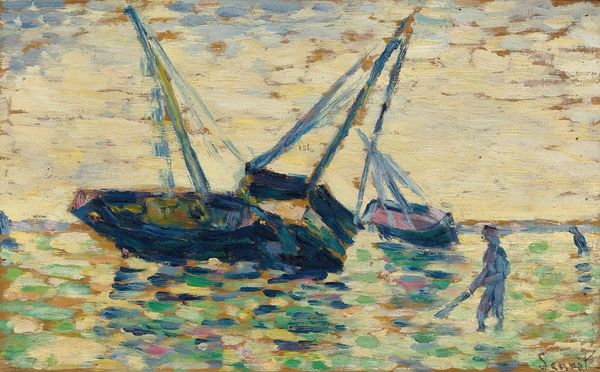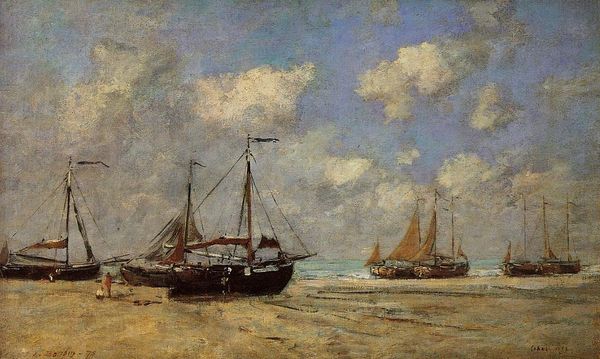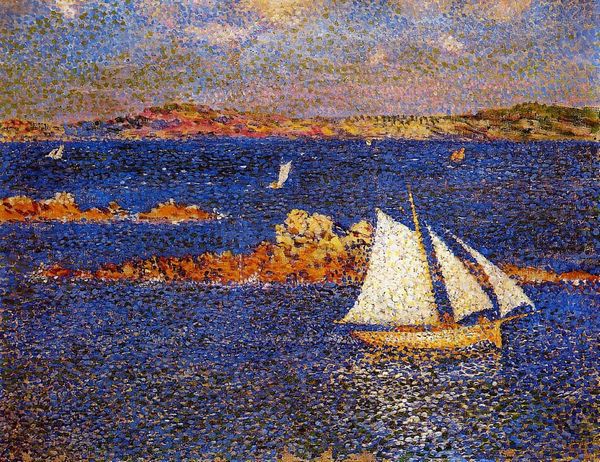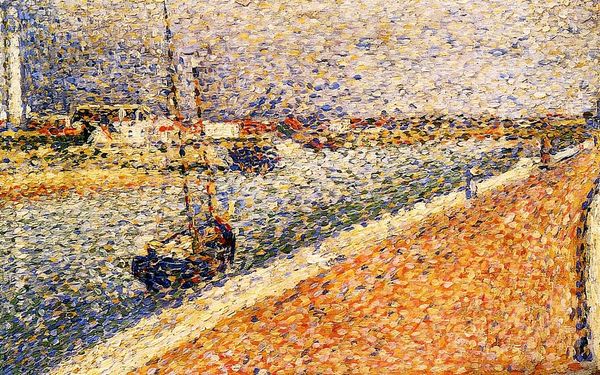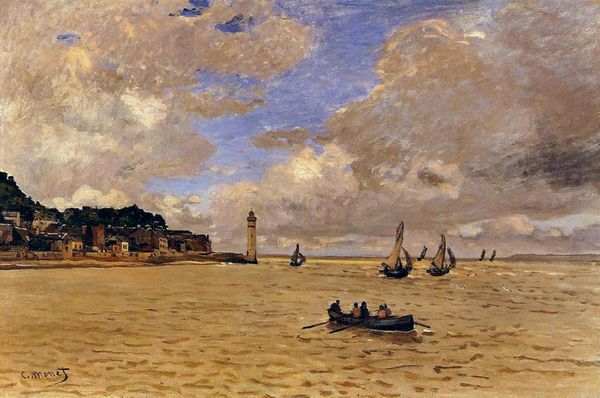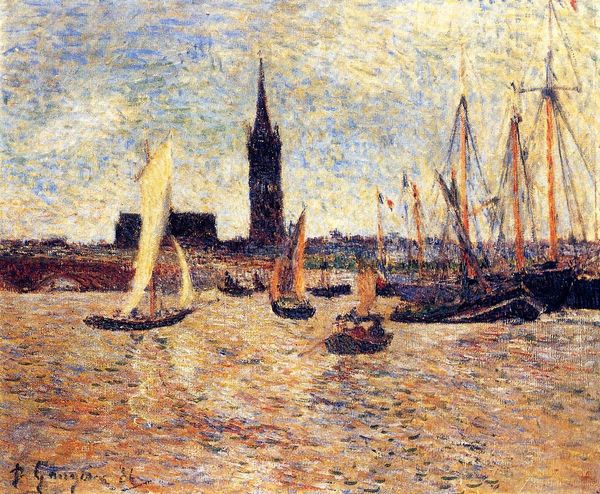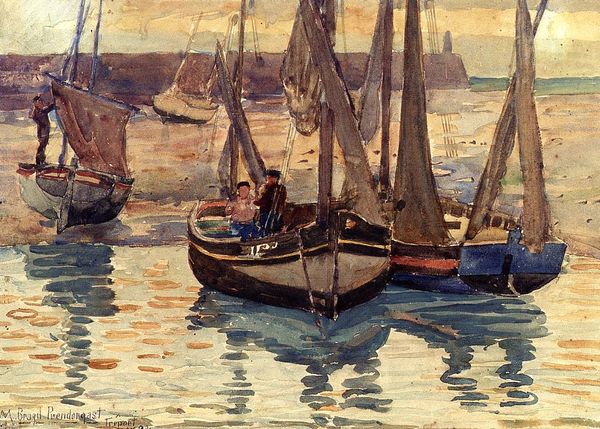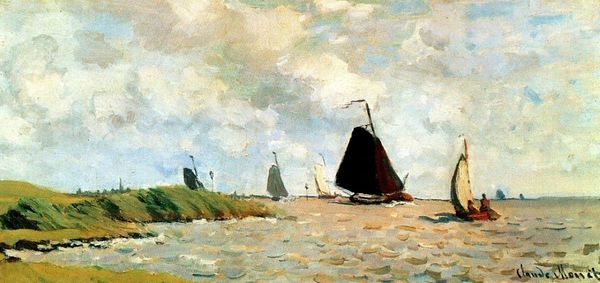
plein-air, oil-paint
#
abstract painting
#
impressionism
#
plein-air
#
oil-paint
#
landscape
#
painted
#
oil painting
#
ocean
#
sea
Dimensions: 65.5 x 81.5 cm
Copyright: Public domain
Editor: So, this is Georges Seurat's "Low Tide at Grandcamp" from 1885, made with oil paint in the plein-air tradition. I find the stillness really striking, but the texture seems almost agitated. How would you interpret this work from a more formal perspective? Curator: A fitting question. The apparent stillness arises precisely from the structural tensions carefully orchestrated within the composition. Consider, for example, the chromatic relations: the juxtaposition of closely valued hues, especially the interplay of greens and browns, serves to flatten the picture plane. Do you notice how that flattening affects your perception of depth? Editor: I see what you mean. It’s almost like the boats are floating on the surface rather than receding into the distance. But what about the brushwork? The texture feels so… deliberate. Curator: Precisely. The facture is crucial here. Note Seurat's application of paint – the controlled, even distribution of small, distinct strokes. This lends a visual unity to the disparate elements. These touches of color act almost as pixels, and, rather than blending smoothly, they create a vibrating optical mixture for the eye. How does this affect the light? Editor: It makes it shimmer, almost. It’s not a naturalistic depiction of light, but it has its own kind of intensity. I’m starting to see the ‘agitation’ I mentioned isn’t chaos, but an organized visual system! Curator: Indeed. The pointillist technique doesn't just render a scene, it constructs a visual experience. The overall effect underscores Seurat's departure from impressionistic spontaneity toward a more structured approach. We may note an almost scientific analysis to impressionism here! Editor: That makes so much sense now! Focusing on how Seurat manipulated colour and brushstroke helps me understand his aims on a much deeper level than I had realized. Thank you.
Comments
No comments
Be the first to comment and join the conversation on the ultimate creative platform.
